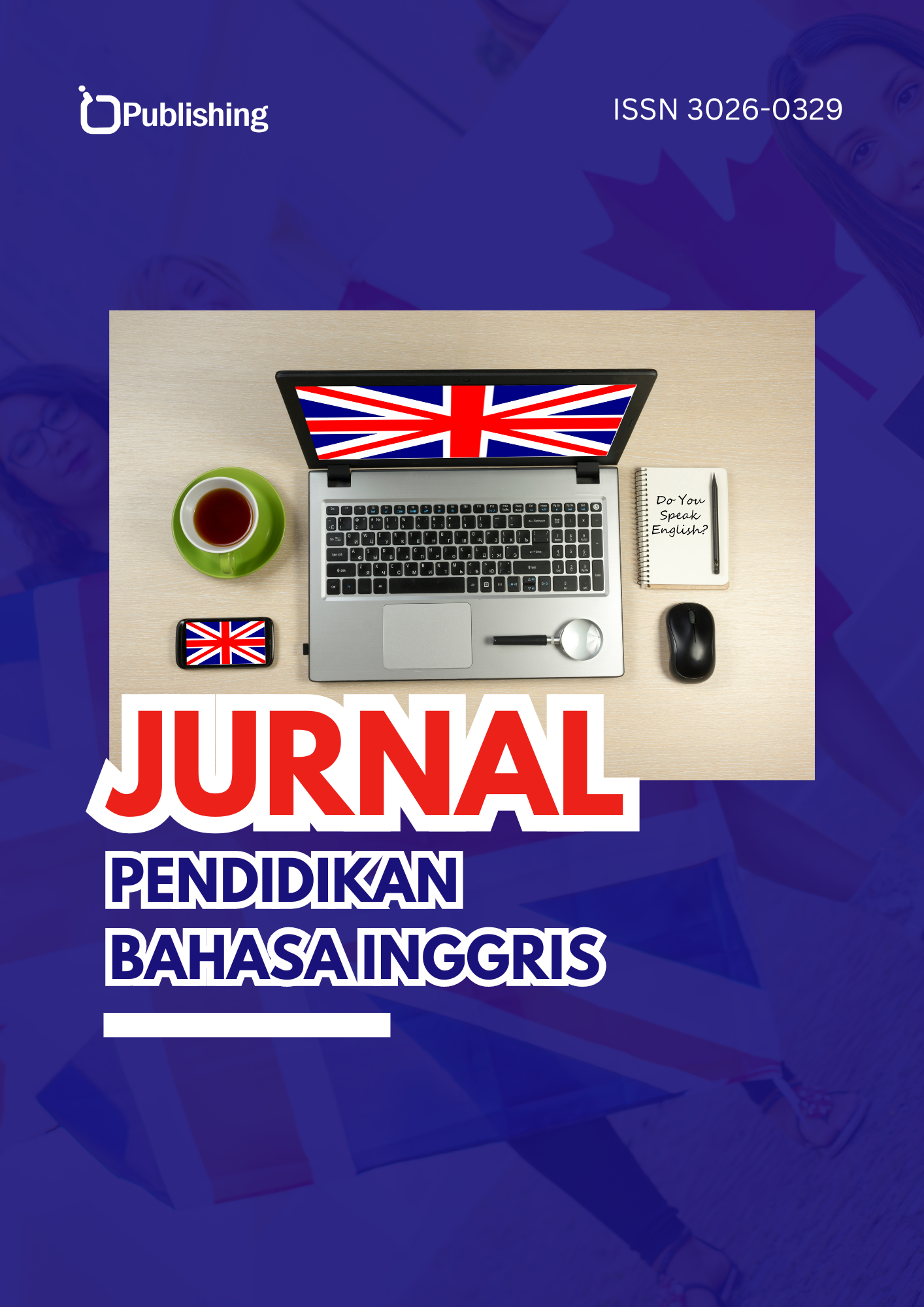Lexical-Semantic Classification of Neologisms in Media Discourse
DOI:
https://doi.org/10.47134/jpbi.v2i1.866Keywords:
Language, Neologisms, Media Discourse, Lexicon, Multiple Meanings, Context, Borrowed Words, Lexical, Semantic, Morphological ClassificationAbstract
Neologisms enhance and enrich any language, but also provide challenges for us until the notions become known and understandable. A neologism dictionary can help us grasp and translate new terms accurately. If the text contains a neologism that is not defined in a dictionary, we must decide its meaning independently, taking into consideration the derived aspects of the provided word and depending on the context. This article describes and illustrates the meaning of neologisms in our language today, their structure and composition, and their lexical-semantic classifications in media discourse.
References
Awadh, A. N. M. (2020). Challenges of translating neologisms comparative study: Human and machine translation. Journal of Language and Linguistic Studies, 16(4), 1987–2002. https://doi.org/10.17263/JLLS.851030 DOI: https://doi.org/10.17263/jlls.851030
Codó, E. (2018). CLIL, unequal working conditions and neoliberal subjectivities in a state secondary school. Language Policy, 17(4), 479–499. https://doi.org/10.1007/s10993-017-9451-5 DOI: https://doi.org/10.1007/s10993-017-9451-5
Copland, F. (2014). Challenges in Teaching English to Young Learners: Global Perspectives and Local Realities. TESOL Quarterly, 48(4), 738–762. https://doi.org/10.1002/tesq.148 DOI: https://doi.org/10.1002/tesq.148
Erarslan, A. (2019). Primary school second grade english language teaching program: Insiders’ views on its strengths and weaknesses. Elementary Education Online, 18(4), 1467–1479. https://doi.org/10.17051/ilkonline.2019.631471 DOI: https://doi.org/10.17051/ilkonline.2019.631471
Eskildsen, S. W. (2024). ‘I like the song and nice video’: a pupil-led activity in the young learner EFL classroom with implications for pedagogy. Classroom Discourse, 15(1), 73–93. https://doi.org/10.1080/19463014.2023.2210236 DOI: https://doi.org/10.1080/19463014.2023.2210236
Hamdan, H. J. (2021). The use of arabic neologisms in social media applications. International Journal of Arabic-English Studies, 21(1), 45–60. https://doi.org/10.33806/IJAES2000.21.1.3 DOI: https://doi.org/10.33806/ijaes2000.21.1.3
Hargreaves, E. (2021). Children’s experiences of agency when learning English in the classroom of a collectivist culture. System, 98. https://doi.org/10.1016/j.system.2021.102476 DOI: https://doi.org/10.1016/j.system.2021.102476
Kim, E. (2016). Anglicized Korean Neologisms of the New Millennium: An Overview. English Today, 32(3), 52–60. https://doi.org/10.1017/S0266078416000250 DOI: https://doi.org/10.1017/S0266078416000250
Li, Y. (2021). NEDetector: Automatically extracting cybersecurity neologisms from hacker forums. Journal of Information Security and Applications, 58. https://doi.org/10.1016/j.jisa.2021.102784 DOI: https://doi.org/10.1016/j.jisa.2021.102784
Mattiello, E. (2016). Analogical neologisms in English. Italian Journal of Linguistics, 28(2), 103–142.
Niswa, K. (2023). Understanding Meaning From Online Advertisement Through Semantics Analysis of Slang (SAOS): A Case on Semantics. Studies in Media and Communication, 11(5), 2–9. https://doi.org/10.11114/smc.v11i5.6008 DOI: https://doi.org/10.11114/smc.v11i5.6008
Oyewale, A. (2018). Technological entrepreneurship culture and the potential for knowledge-based economic development in Nigeria: A discourse. Entrepreneurship Education: Opportunities, Challenges and Future Directions, 251–289.
Qiu, X. (2022). Creating an effective English-Medium Instruction (EMI) classroom: Chinese undergraduate students’ perceptions of native and non-native English-speaking content teachers and their experiences. International Journal of Bilingual Education and Bilingualism, 25(2), 641–655. https://doi.org/10.1080/13670050.2019.1707769 DOI: https://doi.org/10.1080/13670050.2019.1707769
Rajasekaran, S. (2020). How do Multilingual Children Experience English Language Acquisition in an Urban Indian School? Contemporary Education Dialogue, 17(2), 202–236. https://doi.org/10.1177/0973184920931769 DOI: https://doi.org/10.1177/0973184920931769
Schlieckmann, R. (2024). Speaking Connects—Oral Exams at the Transition from the Primary to the Secondary EFL Classroom. English Language Education, 36, 167–186. https://doi.org/10.1007/978-3-031-59321-5_10 DOI: https://doi.org/10.1007/978-3-031-59321-5_10
Shcherbakova, I. (2021). The experience of project training on classes for foreign language by students of nonlinguistic specialties. Journal of Applied Research in Higher Education, 13(1), 287–299. https://doi.org/10.1108/JARHE-02-2020-0033 DOI: https://doi.org/10.1108/JARHE-02-2020-0033
Uztosun, M. S. (2016). Pre-service and in-service English teachers’ efficacy beliefs about teaching English at primary schools. Elementary Education Online, 15(4), 1191–1205. https://doi.org/10.17051/io.2016.80068 DOI: https://doi.org/10.17051/io.2016.80068
Dautova, M. (2023). Description of the neologisms used in the field of fashion. Международный журнал языка, образования, перевода, 4(1).
Irgasheva, S. (2023). SEMANTIC CHARACTERISTICS OF THE ACTIVITY OF NEOLOGISMS IN ENGLISH INTERNET DISCOURSE. Fergana State University, (1), 104-104. DOI: https://doi.org/10.56292/SJFSU/vol29_iss1/a104
Kotelova, N. (1979). The first attempt at lexicographic description of Russian neologisms. Leningrad. 184(90.
Temnenko, В. О. (2023). Lexical and semantic features of the translation of sports vocabulary (on the material of modern English-language media discourse).
Uktamovna, S. M. (2023). Composition and semantic analysis of neologisms during the coronavirus pandemic. Scientific Focus, 1(1), 678-682.
Virgiawan, A. R. (2021). Organizational culture as a mediator motivation and transformational leadership on employee performance. Academic Journal of Interdisciplinary Studies, 10(3), 67–79. https://doi.org/10.36941/AJIS-2021-0065 DOI: https://doi.org/10.36941/ajis-2021-0065
Vrioni, R. (2023). The Impact of classroom anxiety on second language acquisition: An investigation of university students’ perceptions of anxiety in English language learning. In Esse: English Studies in Albania, 14(1), 74–93.
Wang, X. (2022). Computer-Aided College English Teaching System Based on Virtual Reality and Artificial Intelligence. Wireless Communications and Mobile Computing, 2022. https://doi.org/10.1155/2022/9613587 DOI: https://doi.org/10.1155/2022/9613587
Whyte, S. (2022). Insights into Teacher Beliefs and Practice in Primary-School EFL in France. Languages, 7(3). https://doi.org/10.3390/languages7030185 DOI: https://doi.org/10.3390/languages7030185
Yang, M. (2016). The translation strategies for Chinese diplomatic neologisms from the perspective of “Political Equivalence.” Babel, 62(4), 661–675. https://doi.org/10.1075/babel.62.4.07yan DOI: https://doi.org/10.1075/babel.62.4.07yan
Downloads
Published
How to Cite
Issue
Section
License
Copyright (c) 2024 Sabohat Sharipova

This work is licensed under a Creative Commons Attribution 4.0 International License.










